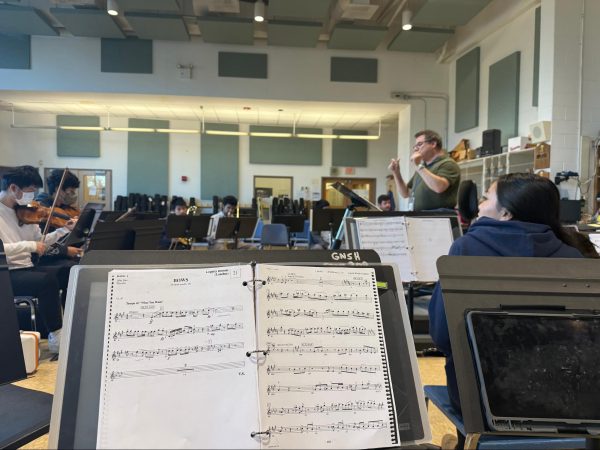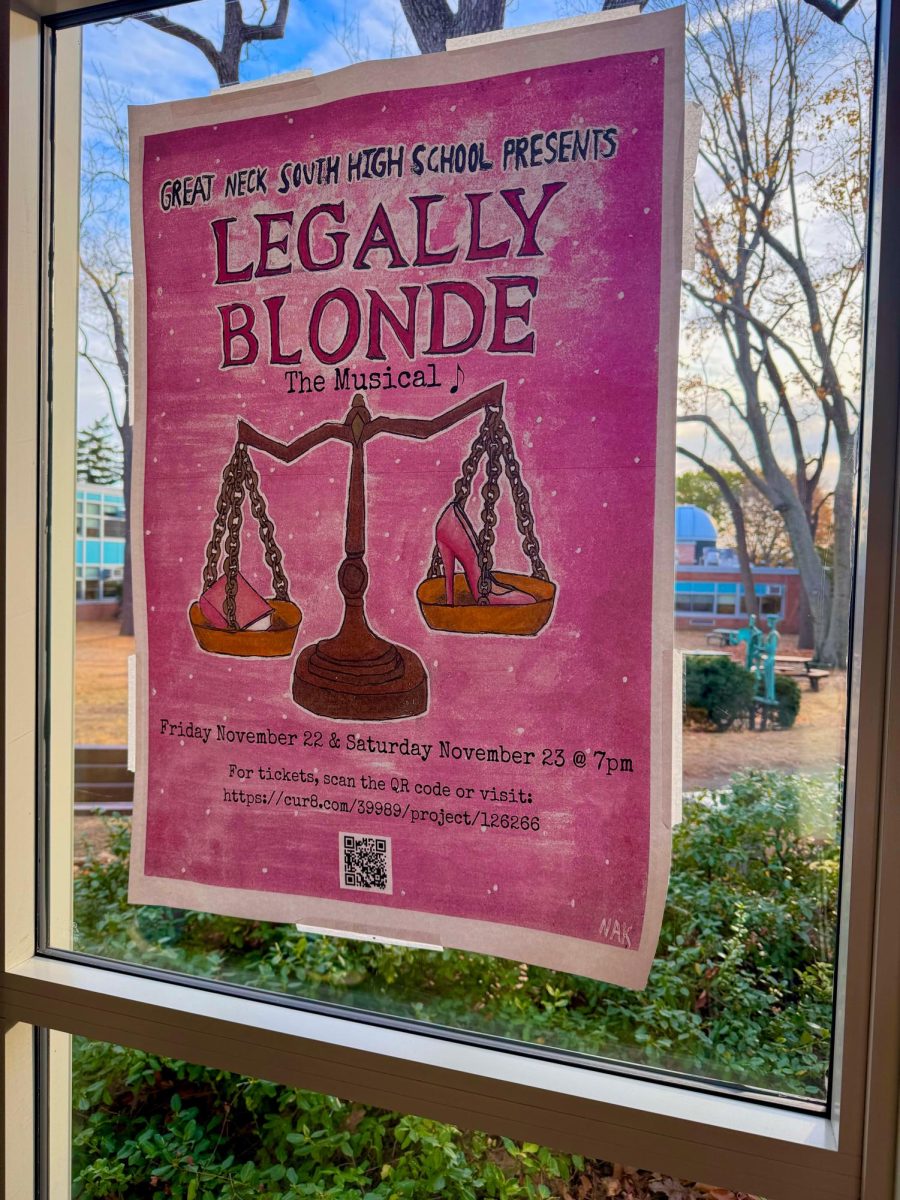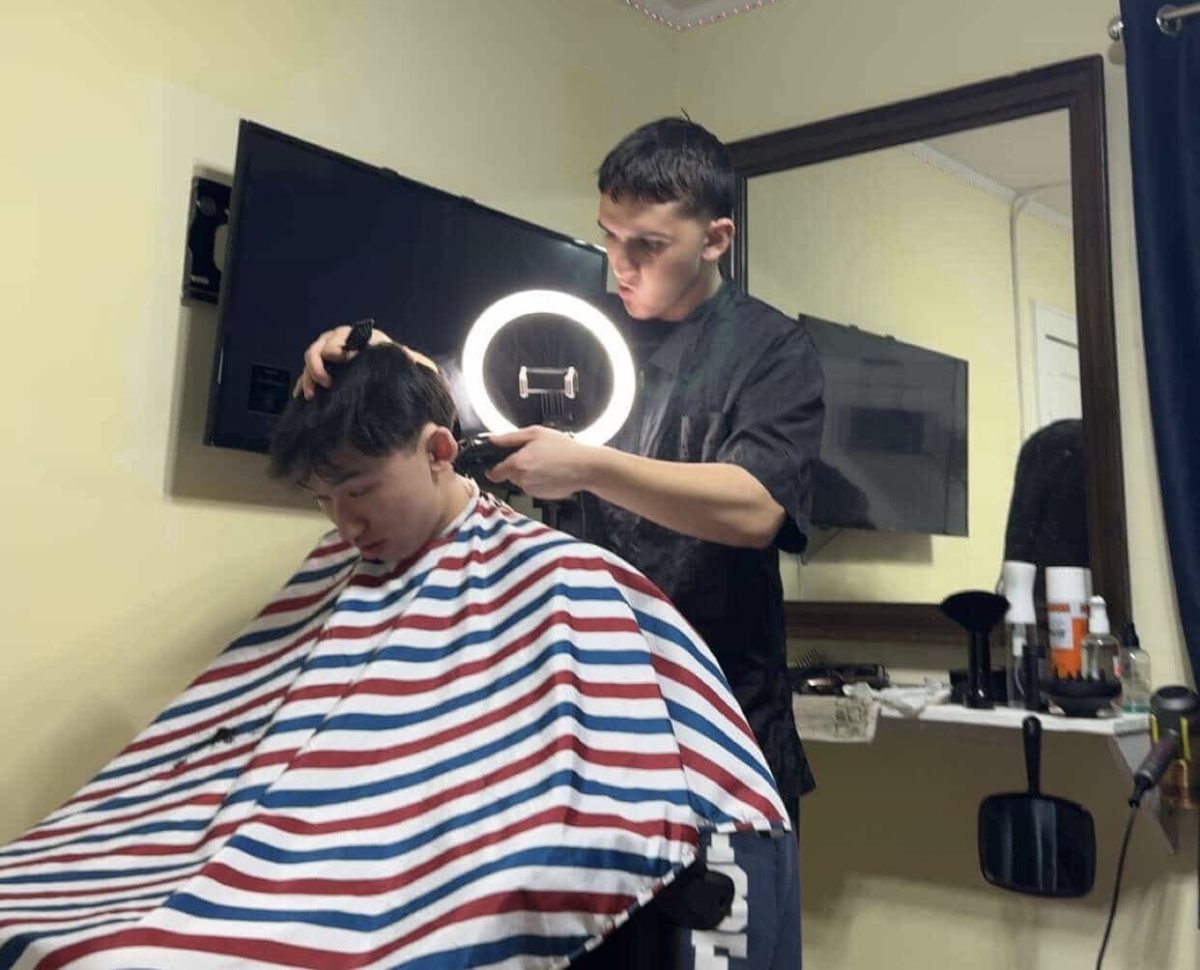
(Photo by Olivia Gu)
The backing track of “Find My Way” echoes throughout the auditorium. Ensemble actors gather on stage in crimson caps. Characters Emmett, Paulette, and Kyle take center stage, practicing their final lines before the curtain call. Elle is at the podium stage right, ready to sing her graduation speech. Ms. Ilana Meredith, the director, watches the scene unfold from the pit, where the orchestra plays. She maps out where each actor should stand and how they should move, otherwise known as blocking. Welcome to rehearsal of the final scene of Legally Blonde.
While the audience only witnesses the final product, a plenitude of hard work is put in to accomplish this. All the subsections—lights, sound, stage crew, costumes, props, pit, actors, and more—are interconnected, performing a crucial role in the success of the show.
Behind the stage, in the dressing rooms, costume supervisor Ms. Lydia Gladstone assembles outfits that encapsulate the essence of each role. “It’s kind of the first thing you see—the costume—and a costume defines a character,” said Ms. Gladstone. One might assume that the costumer makes almost every piece from scratch; however, Gladstone borrows items for most of the looks she creates. “There are a bunch of costumers on Long Island, and we’re constantly texting, “Do you have this in a size that or in a color that? Can I pick it up tomorrow?’” Before technical week (when dress rehearsals start), Ms. Gladstone needs to finish fittings, pull together the pieces of clothing, and tailor them to every character. In Legally Blonde, Elle has many costume changes. From sundresses to cheer sets and pompoms, the ensemble also has specialized costumery. With a huge job to accomplish, Ms. Gladstone has a student team that helps her set up the dressing room racks and make these quick changes backstage.

Next door to the dressing rooms, the crew room overflows with energy as the set design team brings Legally Blonde to life. The team is not just an afterschool commitment, though; Motch, the set design supervisor, also runs a period nine class to work on show scenery. “For Legally Blonde, it’s interesting because there isn’t really a central set with revolving pieces around it,” said Motch. The set design team, instead, needed to create numerous individual pieces that continuously move in and out of the stage. “A lot of our pieces also flip and become another piece. For example, the back of the hair salon is also the bricks for the Harvard yard,” Motch explained.
The show totals 29 scene changes—19 more than the Addams Family performance last year. As a result, the stage crew must coordinate heavily to organize where every piece should go on stage and where it should be stored once it comes off the stage. Stage crew manager Annabelle Chay added, “During intermission, we’re not actually chilling. We’re getting everything ready, moving things, if we don’t need it, back to its designated spot.”

Across the hall in the music wing, the pit orchestra, working through rhythms and learning to adapt to new cues, rehearses their repertoire under the guidance of Mr. Michael Schwartz. The orchestra’s cues are often the actor’s lines that prompt them to continue playing the piece or follow up with a sound effect. With only two days to rehearse before the first sitzprobe (when the orchestra combines with the actors), the pit is on a time crunch to run through the full score with few mistakes. As a result, the musicians have to learn and practice most of the music individually.
Back on stage, Ms. Meredith and the performers also feel this urgency. “It’s always very hard because you’re just trying to cram in a lot within a very short period, which is only two or three hours after school each day. I wish I had like 10 hours a day to do this,” Ms. Meredith said. Despite these constraints, the students are up for a challenge.
This production faces a unique circumstance—two Elles, seniors Michelle Harris and Alyssa Wong. While the double-cast lead does slow rehearsal down, the girls watch each other rehearse when Ms. Meredith works with them individually, taking in all the stage directions. They also take inspiration from other Broadway renditions and the movie, discovering their own take as Elle Woods. “I do think sometimes, ‘Oh, I have to go to rehearsal today, and I’m tired,” but it’s all gonna be worth it. I’m gonna get that feeling at the end like I did it, and I kept pushing through, just like Elle,” said Harris.
Wong added, “I think this [the show] exemplifies that you really have to put in the work, but anything is possible. You just have to practice a lot or study hard in what you’re passionate about.”






